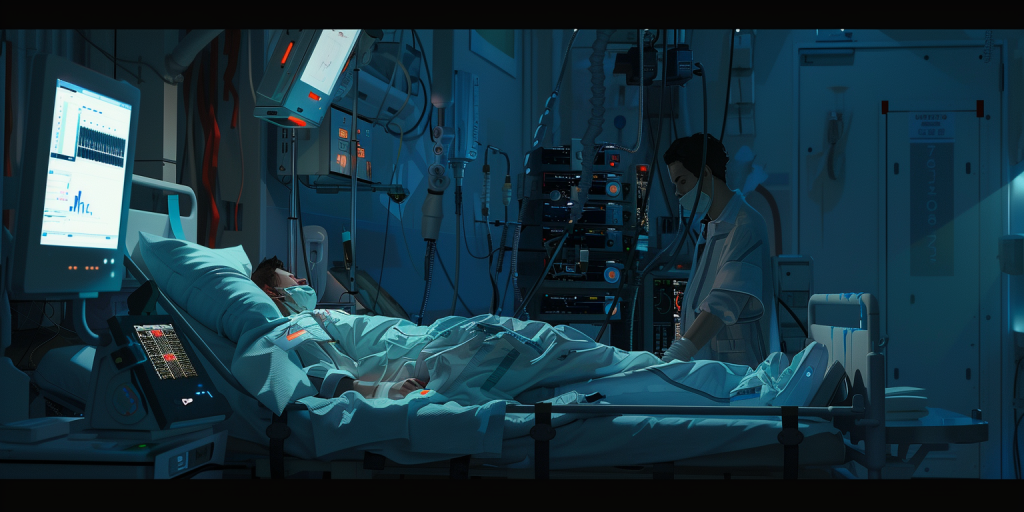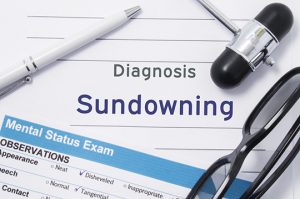
Understanding the Glasgow Coma Scale
The Glasgow Coma Scale (GCS) is a practical and objective method to determine the level of a patient’s consciousness following a head injury. It’s a simple and reliable measurement tool that every nurse should become familiar with and be able to accurately perform. For nurses, the GCS provides a clear picture of trends in a neurologically compromised patient.
The GCS was developed in 1974 at the University of Glasgow (Scotland) by neurosurgery professors Graham Teasdale and Bryan Jennett. They were looking for way to consistently assess and neurological responses that could be understood and shared among medical professionals. Teasdale and Jennett described their scale in the leading British medical journal, The Lancet, in an article titled, ”Assessment of coma and impaired consciousness: A practical scale.”
Nearly sixty years later, the GCS is considered a Gold Standard, and is used worldwide in every medical setting. It has gone through several revisions and is considered an essential component of a complete neurological examination.
The three components: Eye, Verbal, and Motor
The GCS assessment provides a total score comprised of three areas: best eye response (E), best motor response (M), and best verbal response (V). Each component has a maximum score, plus an option of non-testable (NT) if that parameter cannot be measured for some reason.
You can get a helpful PDF checklist from the Institute of Neurological Sciences at Glasgow here.
(If you’d like the checklist in another language, click here.)
Every GCS assessment should be conducted a consistent structured way:
- CHECK for any factor or situation that might interfere with the assessment. For example, do injuries prevent the patient from communicating or responding?
- OBSERVE the patient for spontaneous eye movements, speech, or movements on the right and left sides of the body.
- STIMULATE the patient if no spontaneous actions are observed. Speak to the patient or apply physical pressure to attempt to observe a response.
- RATE the patient’s highest level of responses to determine the GCS. Record the result.
How to score the different components
The levels of response in the components of the Glasgow Coma Scale are ‘scored’ from 1 point, for no response, up to normal values of 4 points(Eye response) 5 points(Verbal response) and 6 points (Motor response).
The total GCS has values between 3-15 points, with 3 being the worst (coma or dead) and 15 being the highest (fully conscious). The score is the sum of the scores as well as the individual elements. For example, a score of 10 might be expressed as GCS10 = E3V4M3.
Eye (E) Score (maximum 4 points):
- No eye opening. If the patient does not respond to a painful stimulus, assign 1 point.
- Eye opening to pain. Apply pressure to one of the patient’s fingertips, squeeze the patient’s shoulder (trapezius muscle), or apply pressure to the patient’s supraorbital notch. If the eyes open in response, assign 2 points.
- Eye opening to sound. Speak to the patient: “Hello, can you hear me? Are you okay?” If the eyes open in response, assign 3 points.
- Eyes open spontaneously and are blinking. No further assessment required, assign 4 points.
- NT= Unable to open eyes due to trauma, edema, dressings, etc.
Verbal (V) Score (maximum 5 points):
Ask the patient questions such as “Can you tell me your name?” “Do you know where you are right now?” or “Do you know what day/date/year it is?”
- No verbal response. If the patient is unable to respond, assign 1 point.
- Incomprehensible sounds. Patient makes sounds, such as groans. Assign 2 points.
- Inappropriate words. Patient responds with random words or phrases unrelated to the questions. Assign 3 points.
- Confused. Patient replies, but not sure of correct response or seems dazed. Confusion may be subtle. Assign 4 points.
- Oriented. Patient answers questions appropriately, engages in conversation. Assign 5 points.
- NT = Intubated or mouth injury.
Motor (R) response (maximum 6 points):
Give a score that represents the highest response in any single limb. For example, if the patient can move their right arm on command, but not their left, their motor score is 6.
- No motor response. If there is a complete absence of motor response to painful stimulation, assign 1 point.
- Abnormal extension to pain is also known as “decerebrate posturing.” The patient extends their head. The arms and legs are also extended and internally rotated. The patient appears rigid, with clenched teeth. The patient is nearing tonsillar brain herniation. Assign 2 points.
- Abnormal flexion to pain occurs when the patient exhibits adduction of the arm, internal rotation of the shoulder, flexion of the elbow and wrist, with pronation of the forearm. This is called “decorticate posturing,” indicating significant brain injury. Assign 3 points.
- Withdrawal from pain, such as pulling away the arm when a painful stimulus is applied to a fingertip. This response is called “normal flexion response” when the patient quickly bends their arm at the elbow to move away from the pain. Assign 4 points.
- Localizing pain when a stimulus is applied, such as a trapezius squeeze or pressure to the supraorbital notch. If the patient reaches toward the site, assign 5 points.
- Obeys commands, including 2-part commands, such as “Lift your left hand and make a fist.” If able to follow and perform, assessment is complete. Assign 6 points.
- NT = If the patient is paralyzed, or otherwise unable to move spontaneously, document “not testable.”
Using it with pediatric patients
Generally, patients ages 5 and older are able to be scored with the standard GCS. A Pediatric Glasgow Coma Scale was developed to address patients under the age of 2 years (pre-verbal) and older than two years (verbal), based on normal child development. Currently, there is no universally-accepted pediatric equivalent of the standard GCS.
Here is the pediatric version based on work from HE James and the Pediatric Emergency Care Applied Research Network:
Best Eye (E) Response
| Score/Points | <2 years (Pre-verbal) | >2 years (Verbal) |
|---|---|---|
| 1 | No eye opening | No eye opening |
| 2 | Eye opens to pain | Eye opens to pain |
| 3 | Eye opens to sound | Eye opens to sound |
| 4 | Eye(s) open spontaneously | Eye(s) open spontaneously |
Best Verbal (V) Response
| Score/Points | <2 years (Pre-verbal) | >2 years (Verbal) |
|---|---|---|
| 1 | None | None |
| 2 | Moans in response to pain | Incomprehensible sounds |
| 3 | Cries in response to pain | Incomprehensible words |
| 4 | Irritable | Confused |
| 5 | Coos and babbles | Oriented, appropriate |
Best Motor (M) Response
| Score/Points | <2 years (Pre-verbal) | >2 years (Verbal) |
|---|---|---|
| 1 | No motor response | No motor response |
| 2 | Abnormal extension to pain | Abnormal extension to pain |
| 3 | Abnormal flexion to pain | Abnormal flexion to pain |
| 4 | Withdrawal to pain | Withdrawal to pain |
| 5 | Withdraws to touch | Localizes to pain |
| 6 | Moves spontaneously | Obeys commands |
Try these practice questions
Answers and explanations are at the end of the quiz.
Q1. What are the three components of the GCS?
- Eyes, Motor, Memory
- Eyes, Motor, Pain
- Eyes, Motor, Verbal
Q2. How many steps are in each component of the GCS?
- Eyes 5, Verbal 4, Motor 6
- Eyes 5, Verbal 5, Motor 5
- Eyes 4, Verbal 5, Motor 6
Q3. For each component of the GCS, the “Best Response” is:
- No response
- Spontaneous response
- Normal response
Q4. When assessing a patient, the proper sequence is:
- Observe, Move, Feel, Rate
- Check, Observe, Stimulate, Rate
- Observe, Feel, Rate, Stimulate
Q5. The purpose for the “Check” step in assessment is to:
- Listen for any verbal responses.
- Identify factors that interfere with assessment.
- Note previous GCS for signs of a trend.
Q6. When assessing a patient whose eyes are extremely swollen and closed from trauma,
how will you record the eye component of the GCS?
- None (1 point)
- Responds to pain (2 points)
- Not testable (NT)
Q7. On approaching a patient to do a GCS assessment, you note they are awake and looking at you. How will you record this on the GCS?
- Spontaneous
- Oriented
- Obeys commands
Q8. When assessing the motor component of the GCS, a patient is unable to obey commands, but bends their elbow when pressure is applied to a fingernail bed. What is the next step?
- Apply supraorbital notch pressure
- Apply a trapezius pinch
- Assign 4 points for normal flexion
Q9. At shift report, you are told that your assigned patient has a GCS of E2, V3, M5. How will you interpret this?
- The patient’s eyes open to sound, they are oriented, and they are able to obey commands.
- The patient’s eyes open to pressure, they can utter words but not make sentences, and they are able to localize to a trapezius pinch.
- The patient’s eyes open spontaneously, they are oriented, and they are able to obey commands.
Q10. Which of the following is the “best response” of a patient’s motor response on their right side?
- Right arm localizes, Left arm flexing
- Right arm no response, Left arm extending
- Right arm localizes, Left arm obeys commands
Correct Answers and Explanations:
- Q1=C; The components of the GCS are Eyes, Verbal, Motor.
- Q2=C; The Eye component has 4 steps, the Verbal has 5 steps and the Motor has 6 steps.
- Q3=3; The best response is what is normal for that component: spontaneous for eyes, oriented for verbal, and obeys commands for motor.
- Q4=B; The correct sequence in assessment is: Check, Observe, Stimulate, Rate.
- Q5=B; Before making observations you should check to identify any factors that could interfere with an accurate assessment.
- Q6=C; If some local physical factor prevents a patient from being able to make a response, that component of the scale is not testable (NT).
- Q7=A; Spontaneous eye opening is present if the patient is able to look at something without stimulation.
- Q8=C; If a patient bends their elbow when their fingernail bed is stimulated, the next step in assessing the motor response is to test if they can localize to a trapezius pinch.
- Q9=B; If your colleague has used the GCS properly, the patient’s eyes open to pressure, they can utter some words but do not form sentences, and they are able to localize to trapezius pinch.
- Q10=A; Localizing represents less impairment than flexion, so the response on the patient’s right side is better than their left side.
Find out your chances by taking one of our practice tests.
Take a free test Reviewed by
Reviewed by 

